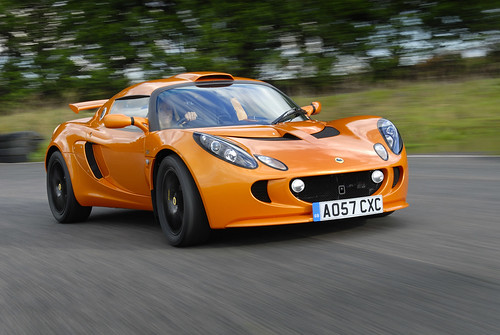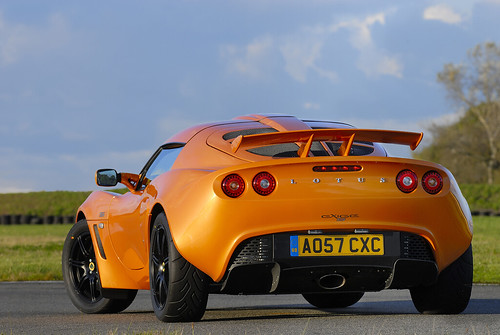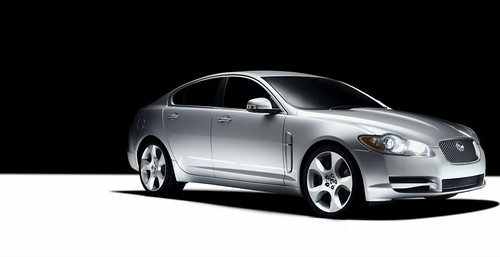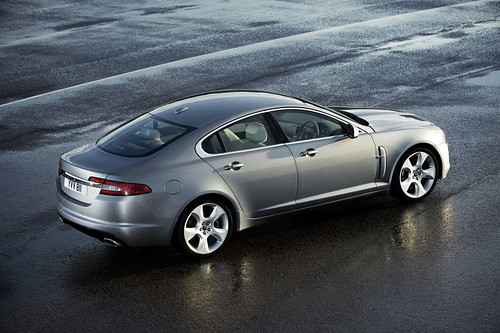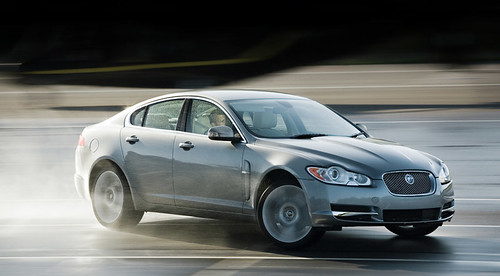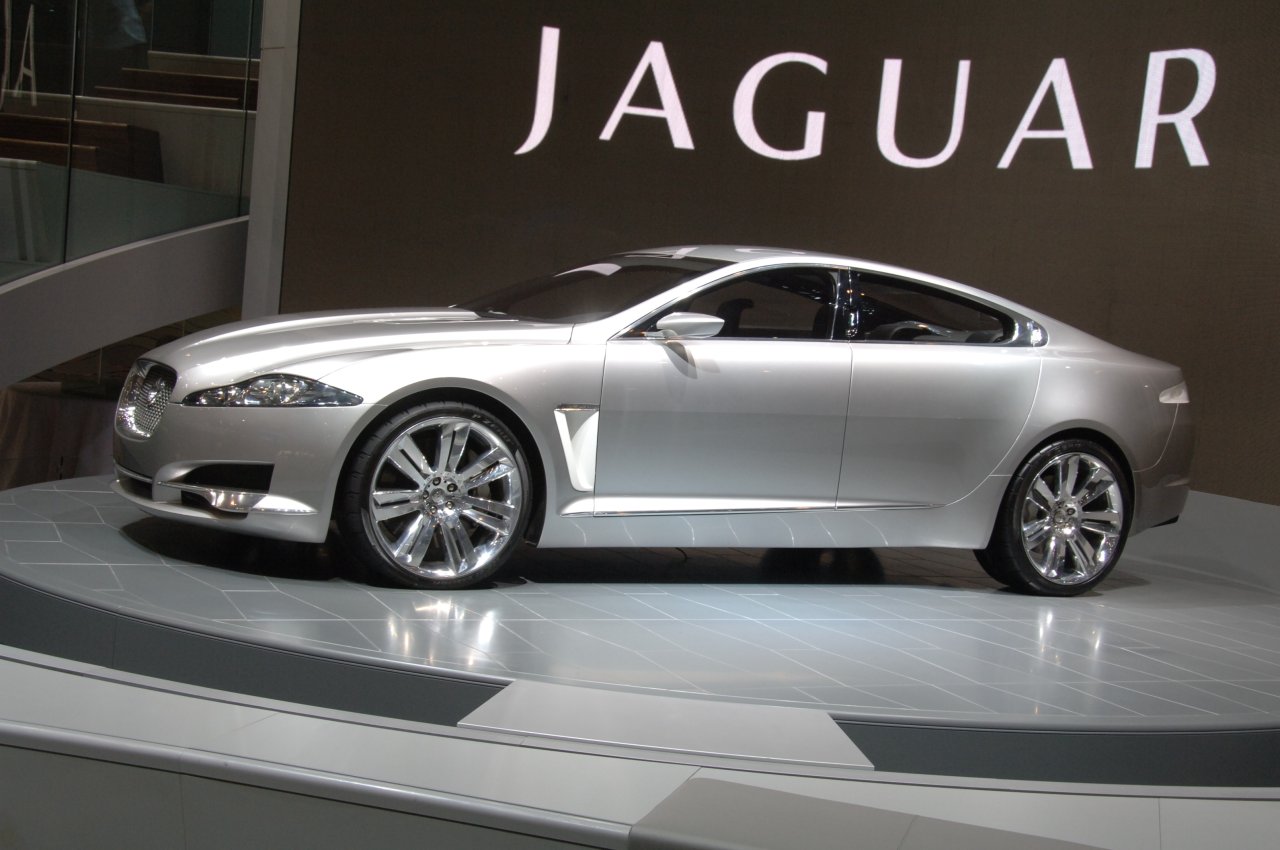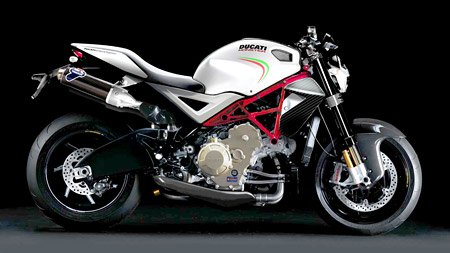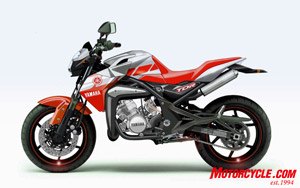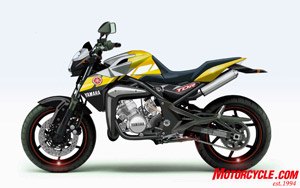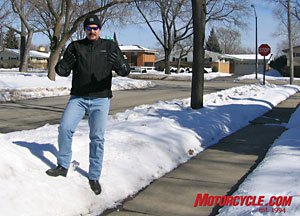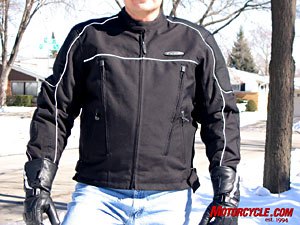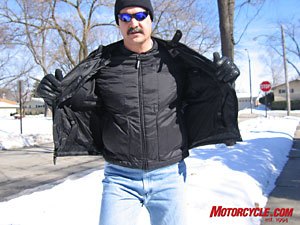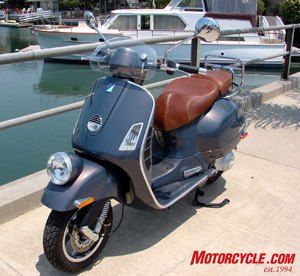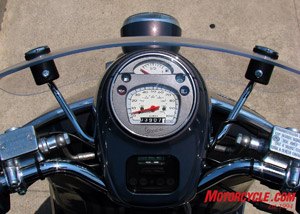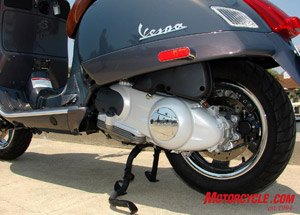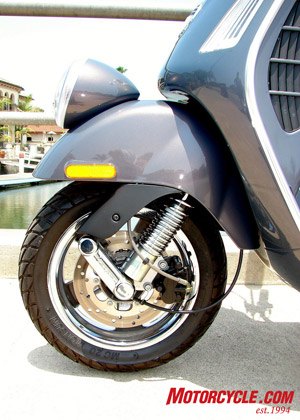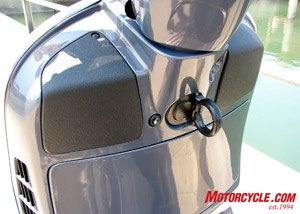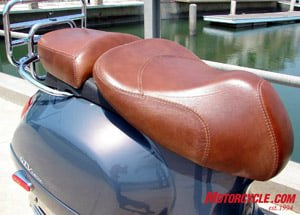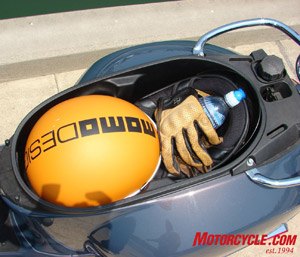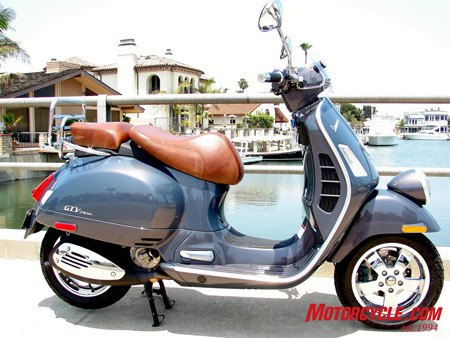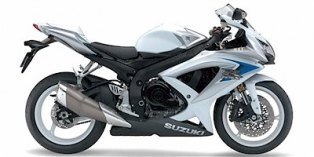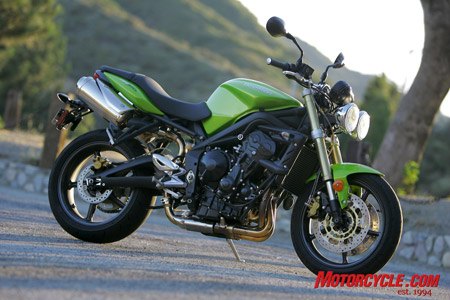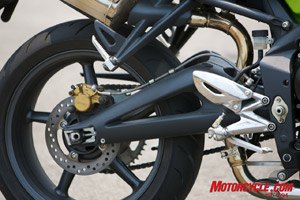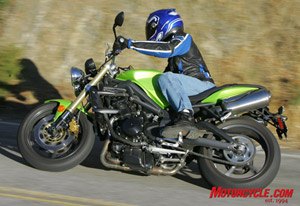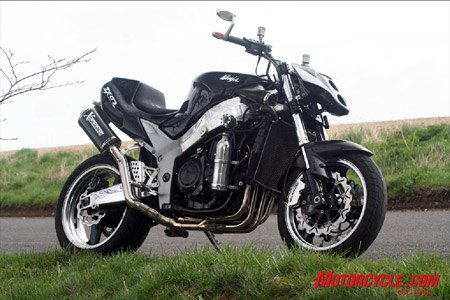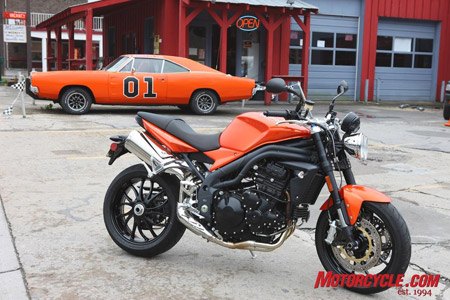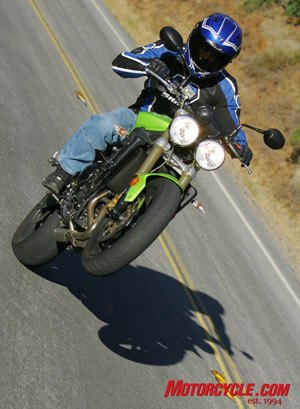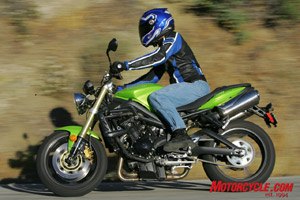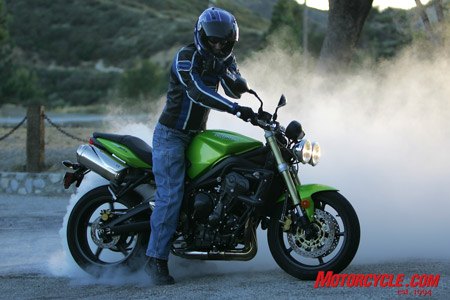By Barry Winfield
Photos by Evan Edge For most people, the image brought to mind by the name Ducati is probably a fully faired red sportbike like the classic 916 or the contemporary 1098. But the essence of Ducati, if you look at sales figures, is really the Monster. This model has sold over 200,000 units worldwide (representing about half of Ducati's current production levels), and it brings home the money necessary for the development of Ducati's more ambitious projects.
But the Monster isn't just some marketing guy's flash of brilliance. The machine provides all-important Ducati flavor and style at a more affordable price, with various models spun off a central theme. And the bellwether of where Ducati is going with this concept in the future is the 2009 Monster 696. It's familiar yet new, predictable but surprising, and it foretells the likely succession of Monsters built off its basic architecture. Tor tested the 696 for us in Europe, but we wanted to sample this important bike on American roads.
Despite the relatively affordable pricing (the new 696 stickers at $8,775), you can readily experience the essential flavor of the storied Italian marque in any long, sweeping corner. The 696 flicks in instantly in response to the rider's input, then is stable and predictable at full lean, able to describe a perfectly precise arc, needing just tiny variations in pressure at the flat bars. At the same time, the engine responds to the rider's right wrist with a compelling exhaust note that alters in intensity at every small change of throttle position.
A personality that is responsive, extroverted, and charismatic; that's a combination you want in a motorcycle and the Monster 696 delivers it. I suppose that might come as a surprise to people who consider the Monster just an entry-level Ducati for those riders not financially able to meet the requirements of the machine's more exotic stable mates. But if you want to get riders hooked on the quintessential character of Ducati's motorcycle line, there has to be a decent-sized serving of mechanical allure in the base model. And in the 696 there is.

The 696's chassis is all-new, as it must be to provide the basis for a whole new generation of Monsters. The steel trellis that rides piggyback on the air-cooled L-twin engine uses thinner-wall, wider-diameter tubing than in previous models, and it hooks to a new aluminum subframe that supports the seat and rear suspension.
Although we've seen the rear suspension described as a rising-rate linkage, the Sachs monoshock unit is mounted directly between the new swing arm and the rear sub frame. If there's any variation in rate, it's due to the change in the relationship of the two mounting points as the swing arm deflects.
In any event, the rear suspension takes the edge off bump impacts nicely, and maintains a pretty flat ride with a minimum of unnecessary motion. The front wheel is controlled by an inverted Showa fork of visibly sturdy construction, and although this unit is firm and well damped, its relationship to the flat tubular handlebar is such that rippled surfaces transmit some mild jack-hammer vibrations.
Most of the time, the ride is good. So is the riding position, which is surprisingly sporty for a naked bike with a tube handlebar. Climb off the Monster 696 onto, say, a Suzuki SV650, and the contrast is surprising. The Monster's bars are set low and far ahead, and the rider's posture ends up being somewhere between that of a sportbike and that of a standard. While the footpegs are set fairly far back, they are mounted low enough to avoid the folded-up feeling you get on some dedicated sportbikes.
It's a good compromise, and goes some way to help negate the windblast that makes its way past the small fly screen that adorns the Monster's front end. Sit on a more upright bike and try the same speeds and you're soon hanging on for dear life. And those speeds turn out to be pretty high. The new Monster produces a modest 80-horsepower, but you wouldn't think so from the enthusiastic way this bike thrusts into the 90-mph cruise zone.

The engine's dead smooth at that speed too, and the bike feels like it can maintain that pace for days. Like other V-twins (sorry Ducati, L-twins) there's pronounced vibration at low engine speeds at big throttle openings that discourages one from fully exploiting the good spread of torque. Below about 4,000 rpm, the engine thuds palpably if you twist the grip. You can use low engine speeds for smooth cruising with a barely cracked throttle, but if you want more power, then a downshift is in order.
Since the revised L-twin (now with new heads and bigger valves) pulls willingly to just past its power peak of 9,000 rpm, there's plenty of range. And when it runs out, well, the shifter works smoothly, and the clutch is a very light pull, even if it engages late in the lever's throw, and is pretty much an on-off mechanism. This makes riding around town a bit tricky until you get used to it, but it's great for normal street riding because you just give the clutch a short pull during shifts and the job's done.
Neither of the levers is adjustable, but where we might have altered the clutch lever's take-up position, the brake lever felt just fine. Controlling two big rotors gripped by radial mount four-piston calipers, this lever never felt over-powered or grabby, even though a two-fingered squeeze is all it takes to stand the bike on its front wheel.
The steering is quick on this bike, and the whole platform is as flickable as anything out there. While it takes a while to get accustomed to this much response, it's teamed with reassuring stability in the canyons. A low center of gravity helps here too, letting a rider change direction with very little effort. Low-riding footpegs let you know when ground clearance is becoming an issue, but they do so mainly by dropping the edge of the soles of your boots onto the road surface.
That's because the pegs themselves are short, and they share a somewhat inelegant casting that serves as mounting hardware for the passenger pegs. The casting forces the heels of your boots outward. In this pigeon-toed position, my boots are wider than the pegs. Ergo, the first warning about lean limitations comes in the form of a soft vibration as asphalt grinds off sole rubber. Sure, there are worse ways of learning about it.
It's easy to see why Monsters are popular with riders who commute to work as well as take to the hills on weekends. The bike makes fun of either exercise. Its light, quick steering works well in traffic situations, particularly now that Ducati has increased the amount of steering lock to 64-degrees by placing the air-intake apertures where the handlebar switch cubes approach the tank. (The real tank and the air-box are under two replaceable plastic tank-cover halves.)
Since the intakes are recessed, the bars can move more before hitting anything. With this much lock, U-turns on two-lane roads are easy to manage. The seat is mounted at a fairly low altitude, better serving shorter riders, and if you pull off the rear seat cowl that comes as standard on US-market 696s, you can even take along a passenger.

This versatility is to be commended in a market dominated by tightly focused product, and we think the 696 offers an interesting combination of utility and exhilaration. Especially at that price. Now let's see what other engines appear in future Monsters.
For additional details and specifications, take a look at Ducati's web site here





